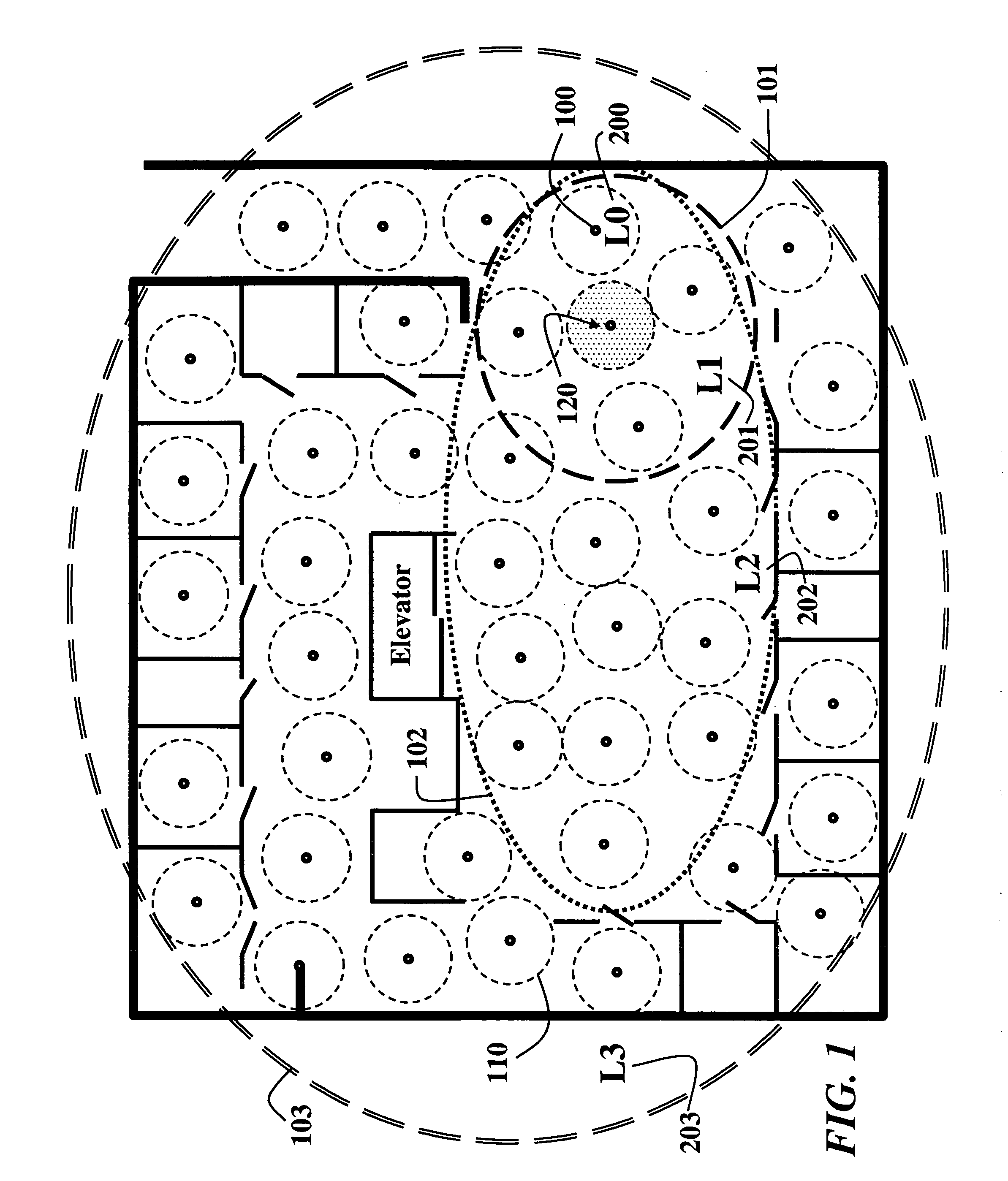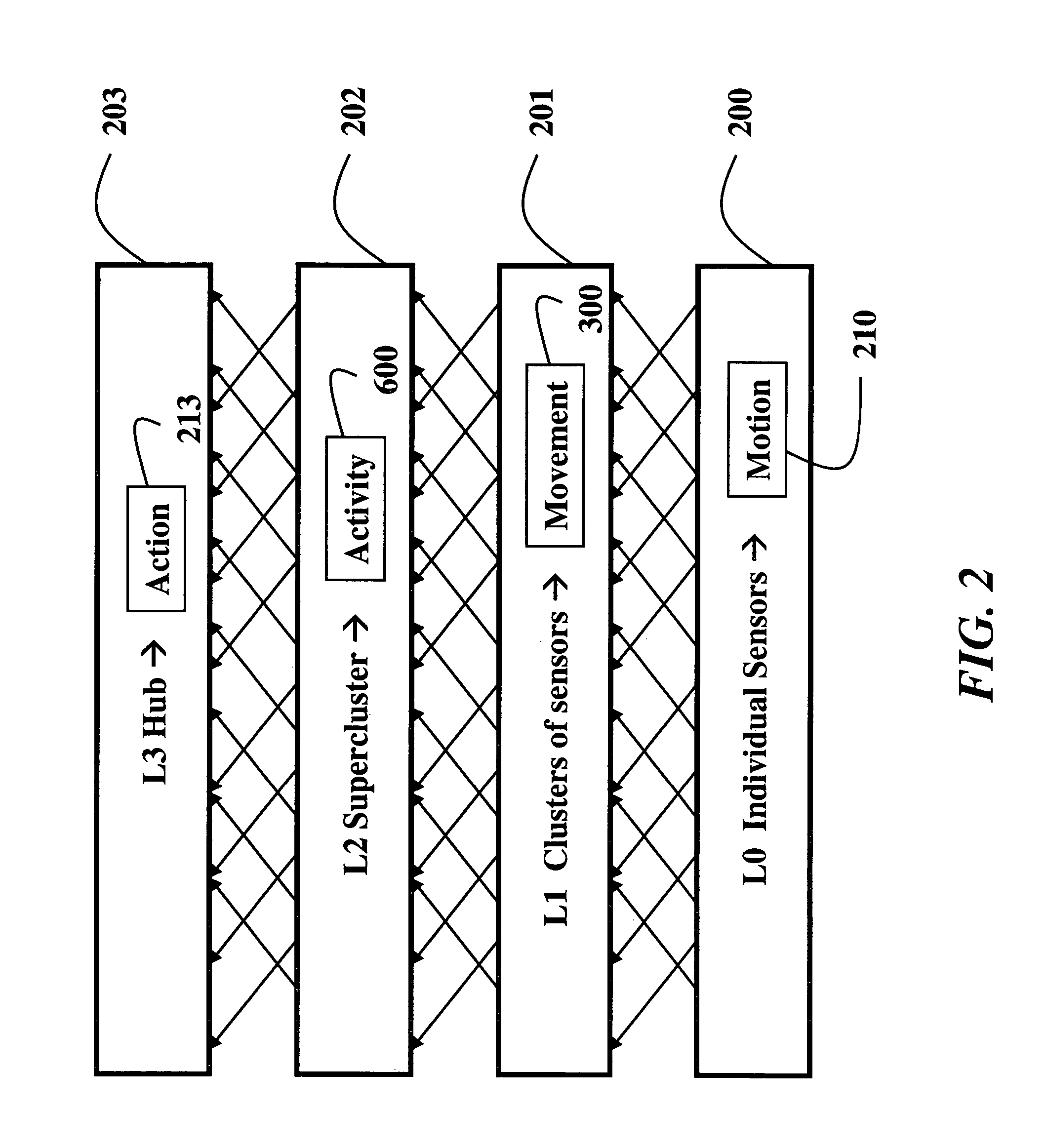Hierarchical processing in scalable and portable sensor networks for activity recognition
- Summary
- Abstract
- Description
- Claims
- Application Information
AI Technical Summary
Benefits of technology
Problems solved by technology
Method used
Image
Examples
Embodiment Construction
[0021] System Structure
[0022]FIG. 1 shows a hierarchical sensor network according to the invention in a building environment. FIG. 2 shows the hierarchy of the network diagrammatically. The hierarchy levels include L0200 (individual sensors 100), L1201 (clusters of sensors 101), L2202 (superclusters 102), and L3203 (hubs 103).
[0023] The hierarchical levels respectively detect motions, movements, activities, and actions of objects, e.g., people in the environment.
[0024] Motion is simply a raw binary event signaled by the motion sensors. Movements do not have significant temporal structure so they can be recognized with simple models that do not rely on a larger context. That is, movements can be detected locally. Activities are groups of movements, so activities can cover a larger area, but can still be detected locally without the benefit of a global context. Activities may incorporate some significant temporal structure. Actions require a global context to be detected, and may h...
PUM
 Login to View More
Login to View More Abstract
Description
Claims
Application Information
 Login to View More
Login to View More - R&D
- Intellectual Property
- Life Sciences
- Materials
- Tech Scout
- Unparalleled Data Quality
- Higher Quality Content
- 60% Fewer Hallucinations
Browse by: Latest US Patents, China's latest patents, Technical Efficacy Thesaurus, Application Domain, Technology Topic, Popular Technical Reports.
© 2025 PatSnap. All rights reserved.Legal|Privacy policy|Modern Slavery Act Transparency Statement|Sitemap|About US| Contact US: help@patsnap.com



